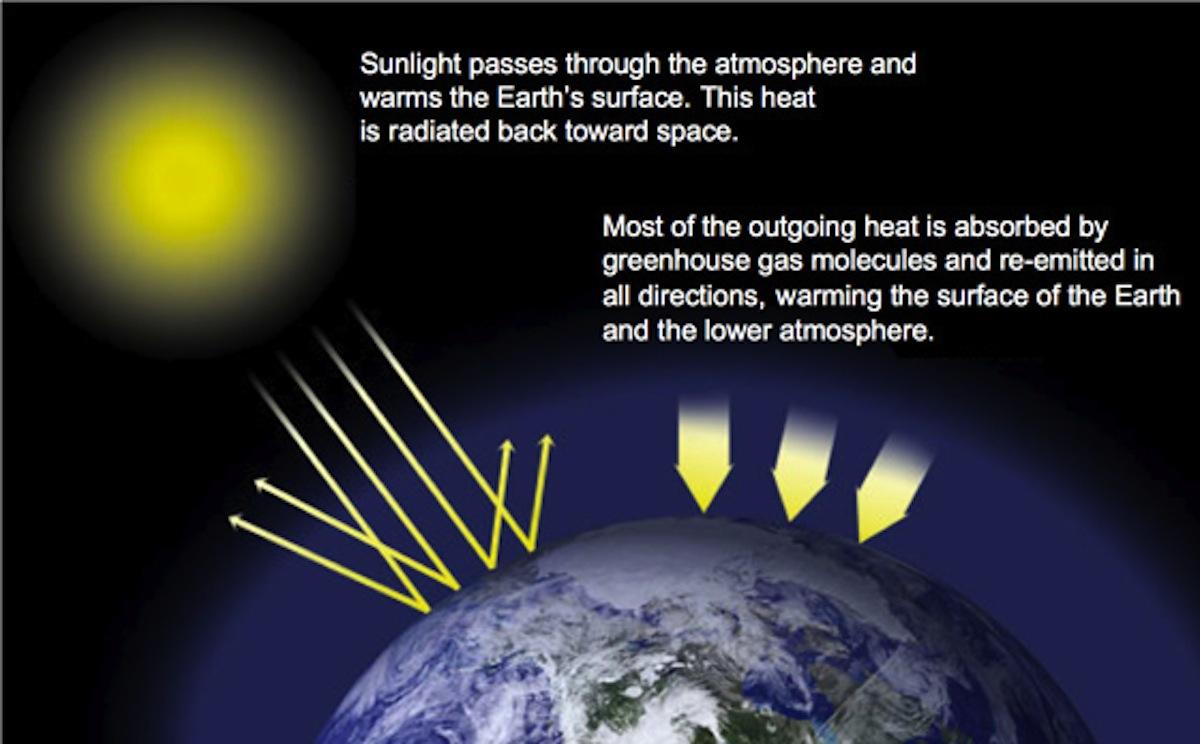
Greenhouse gases trap heat in the atmosphere warming the earth.
National Aeronautics and Space Administration
PORTLAND, Ore. -- Oregon's second annual greenhouse gas emission report, released this week, doesn't hold any surprises, but it puts the state ahead of Washington and Idaho in terms of looking at the problem from the bottom up.
All the Pacific Northwest states estimate their greenhouse gas emissions based on the activities of entire industries, such as transportation, utilities, agriculture and forestry. To date, only Oregon requires individual companies and institutions to report their greenhouse gas emissions.
“This bottom-up reporting will be more accurate,” said Colin McConnaha, greenhouse gas specialist for Oregon’s Department of Environmental Quality. “The most immediate use is a more accurate characterization of statewide emissions ... In coming years the trending will be helpful to inform future policy.”
Greenhouse gases contribute to climate change by trapping infrared heat in the atmosphere that warms the earth. Scientist have found that this warming endangers man and nature by melting glaciers, raising sea levels and altering weather patterns.
Greenhouse Gases
- Carbon Dioxide (CO2)
- Methane (CH4)
- Nitrous Oxide (N2O)
- Fluorinated Gases
The problem led the federal government to mandate greenhouse gas emissions reporting by individual companies and entities beginning last year. The first reports for some companies must be submitted to the federal Environmental Protection Agency in September. Other deadlines have been extended. That program targets only the largest polluters, those that emit 25,000 metric tons of carbon dioxide equivalent. This would include individual coal-burning power plants, paper mills and large universities.
Oregon’s threshold is 2,500 metric tons, which allowed it to capture data from more than 100 smaller companies and entities in addition to the 71 that reach the federal cutoff.
The newest report shows that Portland General Electric Company’s Boardman coal-fired energy plant remains the biggest greenhouse gas emitter in the state. It spewed out more than 4 million metric tons of greenhouse gases in 2010. The company has agreed to shut down that operation in 2020.
Statewide company-reported emissions totaled 18.9 million metric tons, although this number may not be compared to the 2009 report because reporting protocols changed.
Washington state had been working on a bottom-up reporting program when the federal program was announced. “We went back and revised and started over,” said Neil Caudill, a state environmental planner.
Idaho completed a top-down greenhouse gas emissions inventory in 2008 but does not require bottom-up reporting by individual companies or other institutions.
“We do not track (greenhouse gases) on a statewide basis and there are no plans to do so at this time. Results from the mandatory federal reporting may well have future uses but there are no short-term plans to use them,” Idaho air quality analyst Sue Richards wrote in an email.
All three states have set greenhouse gas reduction goals for the future.
